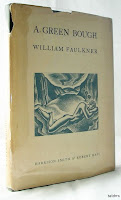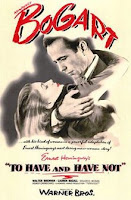Chronology of William Faulkner’s Works
Year | Works | Contexts & Synopses |
1924 | * The first book of poetry. * The cycle of pastoral poems. | |
1926 | * Faulkner’s first novel * A fatally wounded aviator’s return to a small town in Georgia in the end of World War I. * The aviator’s return is revolved around several conflicts (e.g. the state of his engagement with his fiancee, the widow’s intense desire to marry the soldier and the romantic scheme surrounding the fiancee, unfaithful to the aviator during his absence). | |
1927 | * The novel describes the misadventure of passengers on a cruise ship. * The story is told hour by hour and day by day. | |
1929 | Sartoris | * The first tale set in Yoknapatawpha Country. * The edition of an encapsulated version of Faulkner’s original work, the complete text was then published in 1973, as Flags in the Dust. * Representing the decline of the Mississippi aristocracy following the social turmoil of the American Civil War after the conclusion of WWI. * Literary critic Cleanth Brooks has acclaimed this novel as “well-written,” dealing with literary allusions and exploring the predicament of a lost generation. * However, some reviewers, though admiring Faulkner’s writing techniques, emphasized on its seemingly loose plots and inconsistency. |
The Sound And The Fury | * Faulkner’s first masterpiece. * The distortion of time through the use of the inner monologue is fused successfully. * The downfalls of the Compson family are seen through the minds of several characters. * A southern family under great pressure of losing their family member. * Themes: (1) The decay of Southern aristocratic values: the corruption of southern traditions—men to be chivalry gentlemen displaying courage and defending the honor of family name, while women as the symbol of grace and virginity, bringing the family legacy of heritage to their children, which grounds the faith to God in their beliefs—affects the South enormously on their finance, social values and psychological status. (2) Resurrection and renewal: the placement of the story’s climax lies on the weekend, the association with Christ’s crucifixion on God Friday and resurrection on Easter Sunday; numerous events in the novel could be links with the death of Christ. (3) The failure of language and narrative: Faulkner’s inclination to convey the story with various voices instead of single narrative angle or unitary perspective, which makes each narrator vivified with different utterance and speeches but also cast great doubts for reader to convey the truth or obtain the full conception through the language completely. * Motifs: (1) Time: Faulkner’s revolutionary treatment and representation of time with the inconsistency, subjectivity and difficulties for understanding. (2) Order and chaos: characters’ different comprehensions toward the orders and chaos—the one with great sense of order, tolerance, and stronger belief in one’s own values remain the only character unbroken. (3) Shadows: symbol of the past glory. * Symbols (1) Water: representing the cleansing and purity. (2) Quentin’s watch: a gift from the father which symbolizes the family’s glorious heritage, the consistent ticking as the reminder of the passage of time and Quentin’s preoccupation with time and his intention to escape it by breaking the watch remain an action in vein, as the ticking continues, haunted. | |
1930 | <see more analyses in our blog> | |
1931 | * Carrying a highly controversial issue—the theme of rape, the novel was Faulkner’s commercial and critical breakthrough, building his literary reputation. * The degeneration of Temple Drake, a young girl from a distinguished southern family. * Adopted for the film, The Story of Temple Drake, in 1933 and renamed, Trigger, for copyright reasons. * Faulkner asserted that this novel is a “potboiler,” written simply for personal profits, which then triggered an argument among scholars, critics and Faulkner’s intimate friends. | |
* Faulkner’s first release collection of short stories, dedicated to Faulkner’s first daughter Alabama, who died nine days after her birth and his wife Estelle. * The story collection includes many of Faulkner’s highly acclaimed and most frequently anthologized stories (e.g. embodying “A Rose for Emily,” “Red Leaves,” “That Evening Sun,” and “Dry September"). | ||
1932 | * Prejudice is demonstrated to be the most destructive when it is internalized, as in Joe Christmas, who believes, even without any proof of it, that one of his parents was a Negro. * Complicated and violent relationships between a white woman and a black man. * Themes: (1) Gender and race (2) Burdens of the past: personal history emerges gruesomely. (3) The struggle for a coherent identification: the sense of identity influenced by nature, society, history and personal lives. (4) The alienation of each individual: depiction of lonely, fringed and isolated characters, choosing or being forced to live the margin of the society. * Motifs (1) Compound words: to explore the boundaries of human articulation and to meet Faulkner’s artistic needs; in addition, to reserve the existence of English words by combining and embedding them traditionally. (2) Fluid time: a dynamic clash of flashbacks and told in present tense. (3) Names: characters’ names served as a resonance to represent and interact with each individual’s life. * Symbols (1) The dead sheep: religious imagery, hints of crucifixion; a double figure of the character, the sacrificed lamb willingly to go in the slaughter. (2) The smoking from Burden’s house: ill omen, ill will. (3) The street: a potent metaphor of a way of searching for general self-acceptance. | |
1933 | * The second book of Poetry | |
1935 | * Set in Valois, a fictionalized version of New Orleans. * A group of barnstormers who can only maintain a subsistence level, always near to destitution, and whose lifestyles and personal relationships are unconventional, shocking by the social standards, meets an exhausted and emotional newspaperman, who is deeply indulged in them and who is ended with tragic consequences. | |
1936 | * Racial prejudice. * The rise of a self-made manor owner and his disastrous fall out of the racial prejudice and the failure of love. * A young man is rejected by his father and brother because of his mixed blood. | |
1938 | * The story of Sartoris Family, who first appeared in Sartoris (1929), is told in seven episodes. * Themes: (1) Morality and moral development, by describing the character’s growing maturity and innocence of honor and moral concepts, the old South moral code and exploring its positive and negative aspects (2) Racial tension motivated after Civil War with vivid depiction of the black characters—those contented with slavery in contrast with those whose desire for freedom are considered ungrateful and unjustified—leaving the readers disappointed and distressing. * Motifs: (1) Civil war, shown not only the setting but the dominant presence that affects characters’ social values, action and the story plots, and though without description of the battlefield, the devastation in towns, characters’ vanishing fortunes and economic difficulties and civilians’ rebellion are well illustrated in the story. (2) Humor, with comic passages to create the idyllic atmosphere, humorous humorless characters and the knowing and ironic humor effects. | |
1939 | [If I Forget Thee, Jerusalem] | * Originally published under the title The Wild Palms. * A translated version into Spanish by Jorge Luis Borges influences a large number of Latin American readers. * A blend of two stories, a love story, “The Wild Palms” and a river story “Old Man,” but both of them centers on the relationship between a men and a woman. |
1940 | * First of the “Snopes” trilogy, completed by The Town(1957) and The Mansion(1959). * Depicting the exploits of the Snopes Family. * The usage of eccentricities to achieve the comic effects of the Snopes. (e.g. Ike Snope’s carnal inclination to the domestic cattle) | |
1942 | * A collection of seven related pieces of short fiction. * Spiritual title: to focus on a comparison between the slavery of the blacks in America and the Jews in Egypt. * The connection of the nature and the land in three of the stories. * Themes: (1) Enslavement and race (2) relationship between man and nature (3) vanishing wilderness (4) management vs. ownership of the land (5) property and inheritance. | |
1944 | * Film scripts. * Faulkner co-wrote the screenplay with Leigh bracket and Jules Furthman. | |
1946 | * Film scripts. * Faulkner co-wrote the screenplay with Leigh bracket and Jules Furthman. * The U.S. Library of Congress regarded this film “culturally, historically, or aesthetically significant” in 1997 and added it to the National Film Registry. | |
1948 | * Faulkner’s most outspoken moral evaluation of the relationship and the problems between Negroes and whites. * The major character, Lucas Beauchamp, a black farmer sued for murdering a white man, is exonerated through the testimony and the help of black and white teenagers and a spinster from a old Southern family. * Faulkner’s personal response to the racial problems the South was facing. * A stream of consciousness writing style and prolix passages on Southern memories of the Civil War. | |
1949 | * A collection of crime-fiction short stories. | |
1950 | Collected Stories | * The National Book Award |
1951 | * A play/novel sequel to Sanctuary(1931). * Written in the form of a three-act play with a narrative prologue to each act. * A drama focuses on the courtroom trial of a Negro woman who had once been a party to Temple Drake’s debauchery. * Experiments with narrative techniques. * One Faulkner’s most well-known lines, often being paraphrased, even quoted in Obama’s speech: “The past is never dead. It’s not even past.” | |
1954 | * Pulitzer Prize and The National Book Award * Faulkner’s longest novel, receiving mixed critic reviews without further development of his literary reputation, however, claimed by the author himself that it would be a masterpiece when completed. * Set in France during World War I * A story of “Corporal Stephan,” representative of Jesus. | |
1957 | * The second of the Snopes trilogy, about the fictional Snope family in Mississippi. | |
1959 | * The last of the Snopes trilogy. * The novel vividly portrays the Southern economic landscape afterwards the Civil War, the rural populism, racial and social tensions. | |
1962 | * Faulkner completed his Yoknapatawpha story as this final novel was finished. * Pulitzer Prize for fiction. * A picaresque novel, untypically lighthearted, often neglected and dismissed as Faulkner’s lesser work by scholars. | |
1973 | * Heavily edited, the original manuscript was removed 40,000 words in the process, as the abridged version Satoris in 1929. * Complete text and original draft of Satoris. |
pictures from:
http://www.lib.umich.edu/
http://www.1eab.com/servlet/the-4506/A-Green-Bough-~/Detail
Wikipedia
http://en.wikipedia.org/
http://www.1eab.com/servlet/the-4506/A-Green-Bough-~/Detail
Wikipedia
http://en.wikipedia.org/
http://www.tower.com/knights-gambit-william-faulkner-paperback/wapi/101805708
Sources from:
SparkNotes Editors. “SparkNote on The Sound and the Fury.” SparkNotes.com. SparkNotes LLC. n.d.. Web. 11 Jun 2011.
SparkNotes Editors. “SparkNote on Light in August.” SparkNotes.com.
SparkNotes LLC. n.d.. Web. 11 Jun 2011.
SparkNotes Editors. “SparkNote on The Unvanquished.” SparkNotes.com. SparkNotes LLC. n.d.. Web. 2 Jun. 2011.
“William Faulkner—Biography.” Nobelprize.org. 10 Jun 2011
http://nobelprize.org/nobel_prizes/literature/laureates/1949/faulkner-bio.htm
http://nobelprize.org/nobel_prizes/literature/laureates/1949/faulkner-bio.htm
“William Faulkner. ” Wikipedia. 10 Jun 2011.
American Writers—A Journey through History. 8 Jun 2011.


























No comments:
Post a Comment